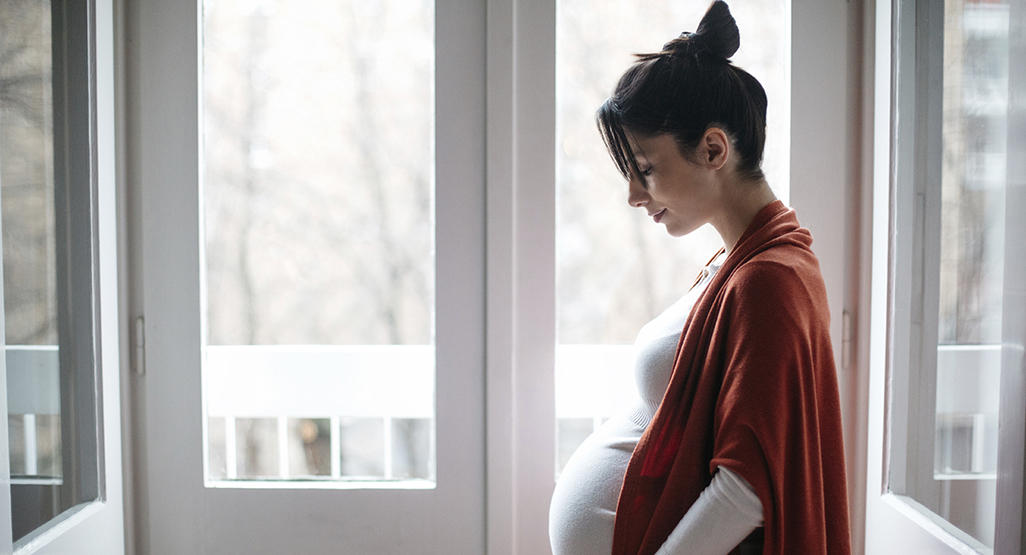What are Braxton Hicks contractions?
Braxton Hicks contractions are intermittent uterine contractions that start in early pregnancy, although you probably won't notice them until sometime after midpregnancy. (Some women never notice them.) They're named for John Braxton Hicks, the English doctor who first described them in 1872.
As your pregnancy progresses, Braxton Hicks contractions tend to happen somewhat more often, but until your last few weeks, they'll probably remain infrequent, irregular, and mostly painless.
However, sometimes Braxton Hicks contractions are hard to distinguish from early signs of preterm labor, so play it safe and don't try to make the diagnosis yourself. If you're having regular contractions but haven't hit 37 weeks yet, or if you have any of the signs of preterm labor listed below, call your provider immediately.
By the time you're within a couple weeks of your due date, it's likely that your cervix has begun to "ripen," or gradually soften up in preparation for labor. Contractions around this time may get more intense and more frequent, and they may cause some discomfort.
Unlike the earlier painless and sporadic Braxton Hicks contractions, which caused no obvious cervical changes, these contractions may help your cervix thin out (efface) and maybe even open up (dilate) a bit. This period is sometimes referred to as prelabor.
What causes Braxton Hicks contractions?
The exact cause of Braxton Hicks contractions is unknown, but some experts believe they play a part in toning the uterine muscle to get the body ready for true labor. You can think of it as your uterus practicing for the real thing! Braxton Hicks contractions can happen any time, but you're especially likely to notice them:
- At the end of the day
- When you're dehydrated
- When you have a full bladder
- During or after physical activity or sex
What do Braxton Hicks contractions feel like?
When you have any kind of contraction, whether Braxton Hicks or true labor, you'll feel your uterus, lower abdominal area, or groin tighten or squeeze, then relax. Unlike contractions during labor, Braxton Hicks are irregular and usually don't hurt, though they may be uncomfortable and occasionally are strong and painful. Some women say Braxton Hicks feel like mild menstrual cramps. Others describe a strong tightness that can even take their breath away. Some women perceive them as the baby "balling up" and still others note a change in the shape of their bellies during the Braxton Hicks contraction. Typical Braxton Hicks symptoms:
- Have no regular pattern
- Vary in intensity, but taper off rather than getting progressively stronger
- Are uncomfortable, but not usually painful
- Are infrequent
- May stop when you move or change position
How can I tell the difference between Braxton Hicks contractions and true labor?
In the days or weeks shortly before labor, Braxton Hicks contractions may become rhythmic, relatively close together, and even painful, possibly fooling you into thinking you're in labor. But unlike true labor, contractions during this so-called false labor usually don't grow consistently longer, stronger, and closer together.
Here are some key differences:
| Braxton Hicks (false labor) | True labor |
|---|---|
| Contractions are irregular and don't get closer together. | Contractions come at regular intervals and get closer together over time. Each lasts 30 to 90 seconds. |
| Contractions may stop when you walk, rest, or change position. | Contractions continue no matter how you move. |
| Contractions are usually weak (or may be strong and then weak). | Contractions steadily get more intense. |
| You feel contractions in the front of your abdomen. | The contractions feel like they start in the back and move to the front. |
Are Braxton Hicks painful?
Braxton Hicks contractions aren't usually painful, but they can be uncomfortable. To ease discomfort from Braxton Hicks contractions:
- Change your activity or position. Sometimes walking provides relief. Most of the time, resting eases contractions.
- Drink some water because these contractions can sometimes be brought on by dehydration.
- Do relaxation exercises or take slow, deep breaths. This won't stop the Braxton Hicks contractions, but it may help you cope with the discomfort. (Use this opportunity to practice some of the pain-management strategies you learned in your childbirth preparation class.)
- Drink a warm cup of tea or milk.
- Take a warm (but not hot) bath for up to 30 minutes.
When should I call my healthcare provider about Braxton Hicks or pain?
If you haven't reached 37 weeks, call your provider right away or head to the hospital if your contractions are becoming more rhythmic, painful, or frequent, or if you have any of these signs of preterm labor:
- Abdominal pain, menstrual-like cramping, or rhythmic low back pain that doesn't abate with rest
- Regular contractions (at least six per hour, or every 10 minutes – even if they don't hurt)
- Vaginal bleeding or spotting
You may also want to contact your healthcare provider if you notice:
- An increase in vaginal discharge
- A change in the type of discharge – for example, if it becomes watery, looks like mucus, or is bloody (even if it's only pink or blood-tinged)
- Pressure in the pelvic or lower abdominal area (like your baby is pushing down)
- Low back pain, especially if you didn't have it before or if it's dull or rhythmic
If you're past 37 weeks, ask your provider when you should call to let her know you are having contractions. Also, always call your provider or go to the hospital if:
- Your water breaks (even if you aren't having contractions).
- You have vaginal bleeding (more than just spotting).
- Your contractions are coming five minutes (or less) apart.
- You have constant, severe pain.
- Your baby's movements are decreased or absent.
Learn more:
